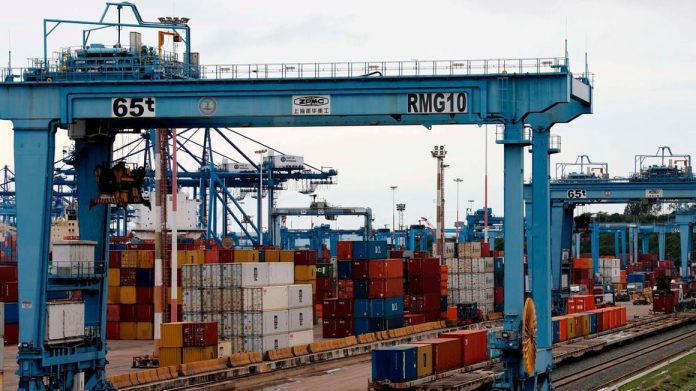The volume of fresh produce from Tanzania and Uganda exported through Mombasa, Kenya has risen by six percent compared to last year. This increase, recorded at 6,813 20-foot equivalent units (TEUs), is attributed to the installation of 1,367 reefer plugging points at Mombasa’s port facilities since last year. Reefers are refrigerated containers essential for maintaining the quality of fresh produce during transport.
The $380 million Business Environment and Export Enhancement Programme, implemented by TradeMark Africa, aims to radically decarbonize value chains delivering fresh produce. This initiative is proving successful, with more traders opting for sea transport over air to export their produce. European consumers, particularly, have been influential in driving this shift.
Currently, perishable goods approvals at the Mombasa port are done at the point of loading, with permit approvals granted by the KenTrade-operated National Electronic Single Window System.
Infrastructure Enhancements
Kenya Ports Authority (KPA) Managing Director Capt. William Ruto highlighted the agency’s efforts in enhancing port infrastructure, including installing 1,367 reefer plugging points: 795 at the Mombasa port, 336 at the Inland Container Depot (ICD) in Nairobi, 216 at the Lamu port, and 20 at the Naivasha ICD.
“Kenya has started transporting horticultural produce by sea to reduce the carbon footprint and improve earnings. This follows Kenya’s agreement with the European Union to transport fresh produce via sea, complying with Mombasa port requirements,” Capt. Ruto stated.
He added, “Our goal is to enhance the competitiveness and share of Kenyan exports, such as avocado, mangoes, and vegetables, to Europe and other international markets by addressing production, storage, logistics, and value addition challenges.”
To further improve customer experience and trade facilitation, KPA has implemented priority lanes at the Mombasa port for reefer exports and access to port scanners.
Economic and Environmental Benefits
The increase in reefer points has enabled the handling of fresh produce from Uganda, Tanzania, and other regions more efficiently. Shippers of containerized perishable produce now receive priority at all entry gates.
Fresh produce exporters have noted a reduction in transportation costs due to the new power points at Mombasa port, which maintain refrigerated facilities along the supply chain from Naivasha to Mombasa. The sea transport mode benefits traders through economies of scale, significantly lowering the cost compared to air transport.
Hasit Shah, CEO of Vertical Agro (EPZ) Ltd, one of the fresh produce exporters, remarked, “The use of sea transport and the introduction of special refrigerated containers and plugging points at port facilities have been game changers. Costs have significantly decreased.”
The global cold chain logistics market, estimated at $182.5 billion in 2022, is expected to reach $343.75 billion by 2027, growing at a compounded rate of 13.5 percent.
Karen Rono, Maersk Eastern Africa’s head of integrated sales cold chain, noted that shipping lines have invested heavily in cold chain supply, attracting more regional traders. “Since the introduction of refrigerated containers, port users from East Africa have leveraged Mombasa port’s more than 1,300 plugging points to meet demand,” Ms. Rono said.

